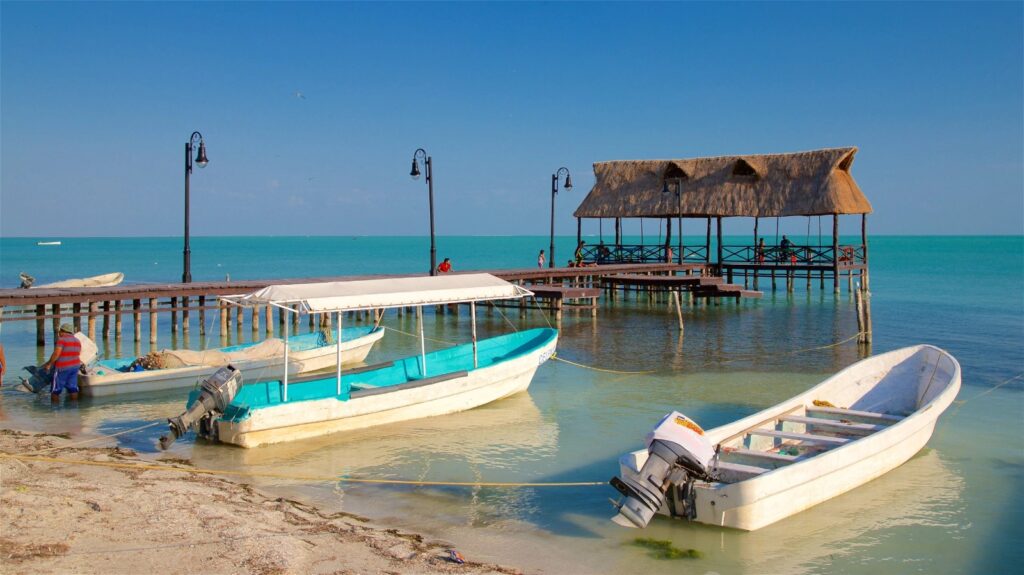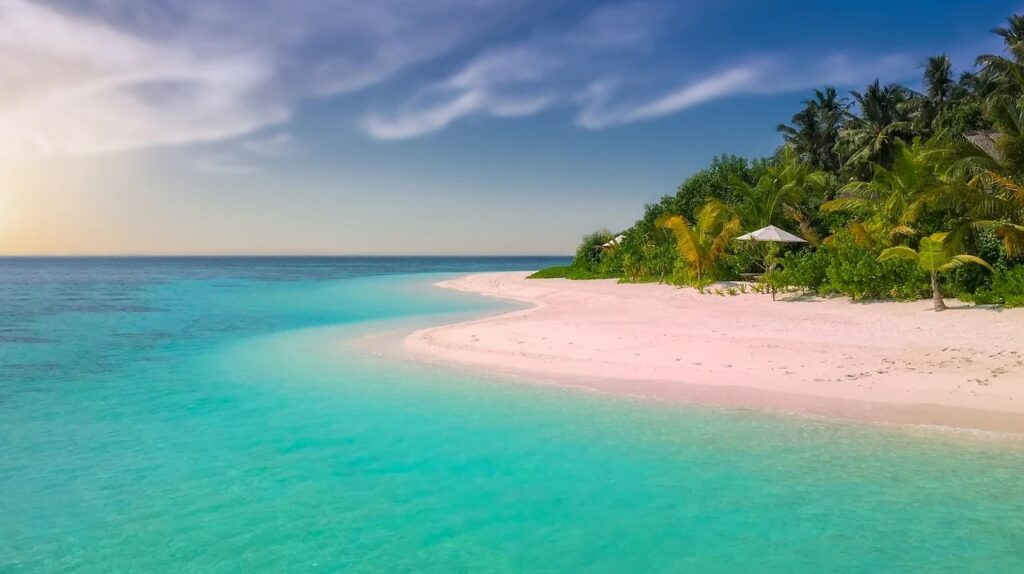Its magic
Mornings here begin at the dock, where fishermen prepare to go in search of what the lagoon has to offer. Seagulls arrive, and frigate birds fly just a few meters away from the boats. In the distance, dolphins leap and spray. In the island village, the windows open, and the first aromas of the kitchen are already present.


The reason
Laguna de Términos Natural Dolphin Sanctuary
• It is a lake ecosystem, unique in the world, as it is where bottlenose dolphins (Tursiops truncatus) are born and live throughout their lives.
• The significant presence of these dolphins at any time of year makes watching them a very unique spectacle.
• On a clear-water day, it is possible to spot more than a hundred dolphins.
• In addition to dolphins, shrimp, mullet, dogfish, and even manatees also live underwater.
The Basics
Board a boat to the sanctuary to see the bottlenose dolphin show.
Must-Dos
1. Sail through Laguna de Términos and admire its vegetation.
Palm groves, mangrove forests, lowland jungles, and tallgrass savannas surround this 706,000-hectare lake, making it one of the largest and most important estuarine lagoon ecosystems in Mexico. Its diverse ecosystems are home to more than 1,400 species of fauna; of these, 30 species of amphibians, reptiles, birds, and mammals are endemic to the Neotropics. Migratory birds also consider it a temporary home to rest their wings after days of flight; it is not unusual to spot the jabiru stork, the peregrine falcon—the fastest bird on the planet—and the white pelican from Canada. Furthermore, its flooded lands are covered with nutritious silt and seagrass that oxygenates the waters and feeds aquatic species. Turtles, crabs, shrimp, crocodiles, and fish also depend on them. Laguna de Términos is an essential link in the delicate chain of life for the entire continent.
2. Birdwatching on Bird Island.
Take one of the boat tours departing from Isla Aguada to Bird Island, an islet formed by tenacious mangrove roots and stems. Near the water, above the treetops, you’ll spot frigate birds swaying from branch to branch during their courtship dance. Males inflate their red wattles to attract females and ensure a new generation of chicks born on the island, a home shared with cormorants and gannets, ducks, herons, and gulls.
3. Try the cuisine.
On Isla Aguada, any time is a good time to sample the bounty of its waters. The cuisine of this Pueblo Mágico (Magical Town) is dictated by the catch of the day. Therefore, you can try a rich variety of dishes here. For lunch, a corn masa tortilla mixed with shrimp, octopus, crab, cilantro, and chopped green chili is a good choice. Blue crab is abundant in the island’s waters and is featured in several dishes, but on the island, crab in garlic sauce is the most emblematic. Giant shrimp and fish are other culinary favorites, savored in various stews. Cocktails and ceviche are always available. Special mention should be made of the dogfish bread, which has been savored with habanero chili for years.
4. Watch the sunset at the pier.
To experience Isla Aguada, you must walk along its boardwalk, where its essence is represented. The Captain Marro Galleon has been bringing people together for two years; First as a café, then as a bar, and now as a parador where taking photos is reminiscent of those pirate stories. Another setting for capturing a memorable postcard with the sea as your backdrop is the Parador de Letras Photographic Gallery; anyone who looks closely will see the island’s distinctive features.
The Chapel of the Virgin of Guadalupe, the first Catholic church built on the island, can already be seen along Marina Street. To one side, there’s a freshwater well where, according to legend, the Spanish and pirates would come to fill their barrels with fresh water and continue their voyage.
An afternoon on Isla Aguada is best appreciated from the dock, where you can watch the sunset and life pass by amidst the birds’ flights.

